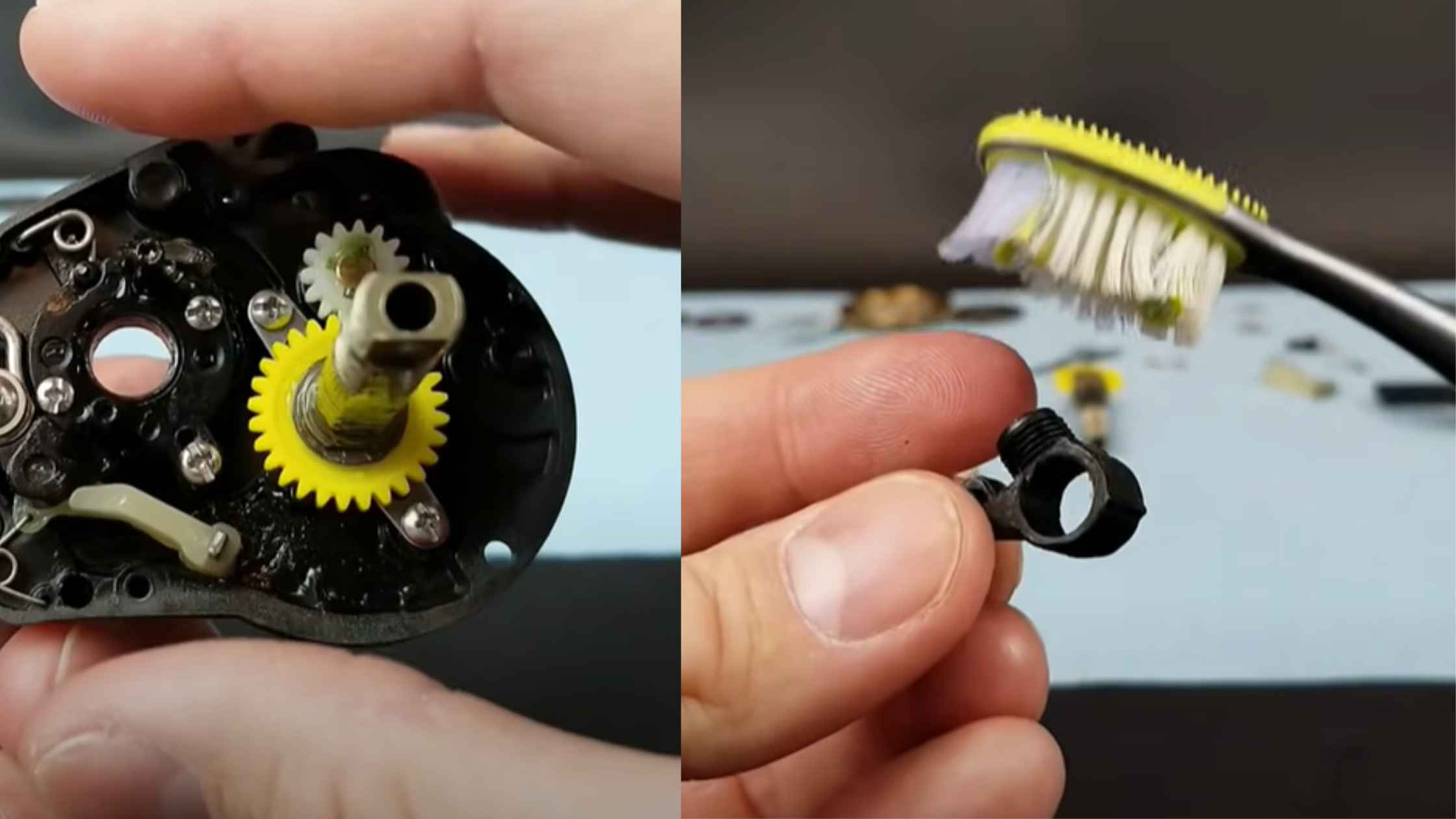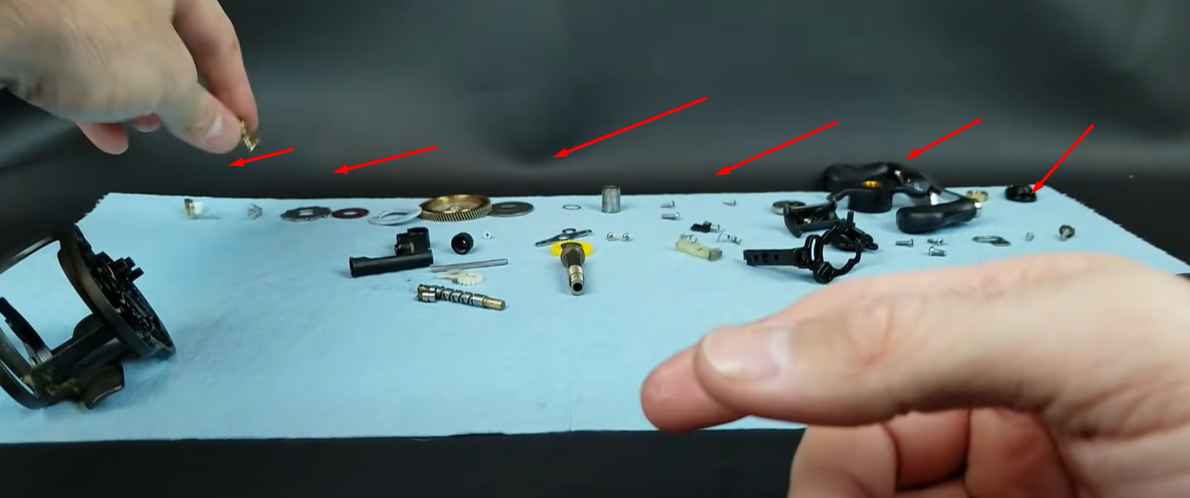If your bait caster line guide is not moving, it often indicates a mechanical issue. Common culprits include dirt buildup or broken internal components.
Baitcaster reels are essential tools for anglers aiming for precision and control while fishing. These sophisticated pieces of equipment allow for accurate casting and efficient retrieval, thanks in part to a crucial component: the line guide. This small part directs the fishing line back onto the spool evenly during retrieval.
A functioning line guide ensures that the line is distributed properly, avoiding tangles and ensuring maximum reel performance. When the line guide fails to move, it disrupts this delicate balance, which can lead to frustrating fishing experiences and potential line damage. Maintaining a clean and well-functioning baitcaster is vital for any angler looking to keep their fishing trips productive and enjoyable. Regular inspections and proper maintenance can help prevent issues with the line guide and other reel components. Baitcaster Line Guide is not moving.

Understanding The Baitcaster Line Guide Issue
Anglers know the frustration when a baitcaster’s line guide stops moving. This vital component ensures a smooth cast and even line distribution on the spool, and when there’s a hiccup, it’s essential to quickly get to the root of the problem. Identifying the symptoms is the first step towards a solution. Let’s Investigate into the signs indicating your line guide might be in distress.
Symptoms Of The Line Guide Not Moving
Recognizing symptoms early can prevent further damage. Here are key indicators that your line guide isn’t functioning as it should:
- Resistance or complete halt in line guide movement
- Unusual sounds coming from the reel during a cast
- Difficulty in casting to a desired distance or location
Uneven Casting
An obvious symptom of a line guide issue is uneven casting. You might experience a lack of precision or find that the line doesn’t lay flat across the spool. This is often due to the line guide failing to distribute the line evenly, causing loops and snarls that interrupt your casting trajectory.
Line Tangling
Line tangling can be a nightmare, leading to lost time and the potential loss of a catch. Without the guide moving back and forth, the line may wind improperly, resulting in knots and snarls that hamper your fishing efficiency.
Obstructed Line Flow
Obstructions in the line’s path can be both a symptom and a cause of line guide issues. Dirt, debris, or even damage to the line guide itself can restrict movement, making it imperative to check the guide’s path for any material that might be causing a blockade.
| Symptom | Possible Cause | Action to Take |
|---|---|---|
| Resistance in line guide | Accumulated grime or mechanical fault | Clean or inspect moving parts |
| Uneven casting | Foreign material in the guide pathway | Adjust tension, ensure guide alignment |
| Line tangling | Line guide stuck or sporadic | Inspect for tangles, clear and test guide movement |
| Obstructed line flow | Foreign material in guide pathway | Remove debris, check for guide damage |
Reasons Behind The Line Guide Issue

Experiencing a baitcaster line guide that won’t budge can be a frustrating hiccup, halting an otherwise successful fishing trip. Understanding the potential causes behind this common issue is key to quick troubleshooting and getting back to casting your line with precision. Below are critical factors contributing to line guide malfunctions on baitcasting reels.
Improper Maintenance
Regular maintenance is crucial for keeping baitcasting reels in top working order. Neglect in this area can lead to a host of problems, including the line guide ceasing to move. Proper care involves systematic cleaning, checking for wear and tear, and timely replacement of worn-out parts.
Lack Of Lubrication
Lubrication plays a pivotal role in the smooth operation of any mechanical device. A baitcaster without adequate lubrication is akin to an engine running without oil, leading to increased friction and potential seizing of the line guide.
Dirt And Debris Accumulation
Fishing environments are naturally replete with dirt, sand, and particulate matter that can infiltrate the mechanics of a reel. Regular cleaning is necessary to prevent this debris from impeding the line guide’s movement.
Mechanical Faults
Sometimes, internal components can fail due to stress or manufacturing defects. These mechanical faults may not be apparent upon visual inspection and usually require a more thorough investigation or professional servicing.
Bent Line Guide
Direct impacts or undue pressure can cause the line guide to bend. Even slight deformations can significantly affect performance, requiring alignment or replacement for the guide to move freely again.
Misaligned Components
Alignment is critical to the exquisite mechanics of a baitcaster reel. Any misalignment, often a result of bumps, drops, or rough handling, can cause the line guide to stick or move erratically.
By addressing these potential issues, anglers can often resolve the line guide problem independently, reducing downtime and ensuring the reel operates smoothly for the next big catch.
Resolving The Baitcaster Line Guide Problem
Anglers often experience the frustration of a bait caster line guide not moving. This halts the fishing trip and decreases casting accuracy. Timely resolution not only saves the day but also extends the life of your equipment. In this comprehensive guide, we’ll explore practical solutions, ensuring you’re back to effortless casting in no time.
Cleaning And Maintenance

A clean bait caster is a functioning bait caster. Dust, debris, and grime can impede the line guide’s movement. Regular cleaning is crucial:
- Remove any visible debris with a soft brush or cloth.
- Wipe down the line guide with a gentle, non-corrosive cleaner.
- Ensure that the guide path is free of obstructions.
Disassembling And Cleaning
Deep cleaning may be necessary if standard cleaning doesn’t fix the issue:
- Consult the manual for proper disassembly steps.
- Take apart the reel carefully, keeping track of all components.
- Clean each piece with soapy water or a specialized reel cleaner, then dry thoroughly.
Lubricating The Line Guide Mechanism
Proper lubrication reduces friction and protects moving parts:
- Apply a quality reel oil sparingly to pivot points.
- Avoid grease, which can attract more debris and cause further blockages.
Inspecting And Adjusting
Regular inspection ensures small issues don’t become big problems:
- Check the line guide for signs of wear or damage.
- Adjust any loose components to ensure they are snug but not overly tight.
Checking For Alignment Issues
- If the line guide is misaligned, carefully bend it back into position.
- Use a flat surface to gauge alignment accuracy.
Repairing Or Replacing Components
- Determine if any parts are beyond repair and source replacements if necessary.
- Reassemble the reel meticulously, ensuring everything fits back into place.
By following these steps, you can swiftly address a stagnant bait caster line guide and reclaim your fishing prowess.
Preventing Future Line Guide Malfunctions
We’ve all felt that moment of disappointment when our bait caster’s line guide decides to take an unexpected break. To minimize the risk of future malfunctions and ensure seamless casting, it’s crucial to adopt certain habits and take proactive measures. Let’s Souse into some practical tips to keep your bait caster in top shape, focusing exclusively on caring for the line guide—the small yet critical component that could make or break your fishing experience.
Regular Maintenance Practices
Maintaining your bait caster involves more than just removing visible dirt and debris. Consistent check-ups are key to avoiding line guide issues down the line. Take time to:
- Inspect the line guide for wear and tear.
- Apply oil to the guide’s path to ensure smooth movement.
- Check that the worm gear and other moving parts aren’t worn out.
Cleaning After Each Use
Grime and saltwater can silently wreak havoc on a bait caster. Thorough cleaning after each use is a non-negotiable routine to prevent the line guide from seizing up. Follow these steps:
- Remove any debris using a soft-bristled brush.
- Gently clean with soap and freshwater if exposed to saltwater.
- Dry completely to prevent rust and corrosion.
Proper Storage Techniques

How you store your reel can be just as important as how you use it. Avoid moist or extreme temperature conditions that can damage the line guide. Keep your bait caster:
- In a cool, dry place.
- Away from direct sunlight.
- In a protective case to fend off dust and impact.
Using Quality Components
Reliable performance often depends on the quality of components within your bait caster. Opt for high-grade bearings and lubricants that Augment the line guide’s operation. Remember, investing a little more in the present can save a lot in the future.
Choosing The Right Line
The choice of line can impact the line guide’s health. Avoid using a line that’s thicker or tougher than what your reel is designed to handle. Choosing the right line reduces the stress on the guide and helps maintain smooth casting.
Investing In High-quality Baitcaster Reels
Ultimately, the longevity of your bait caster—including its line guide—rests upon the foundational quality of the reel. Selecting a high-quality bait caster from a reputable brand goes a long way in reducing malfunctions and repair costs.
Frequently Asked Questions Of Baitcaster Line Guide Not Moving
Why Is My Baitcaster Line Guide Stuck?
Baitcaster line guides often get stuck due to dirt buildup, improper spool tension, or gear misalignment. Regular maintenance and cleaning can prevent this issue. Check for debris and adjust the spool tension as needed.
How Do I Fix A Baitcaster Line Guide?
To fix a bait caster line guide, start by cleaning any debris. Lubricate moving parts lightly with reel oil. Ensure the worm gear and line guide are properly aligned. Consult your reel’s manual for specific instructions on adjustments.
Can A Damaged Line Cause Guide Issues?
Yes, a damaged or twisted line can cause the line guide to malfunction. Inspect the line for damage and replace it if necessary. Always use the correct line type and weight for optimal performance.
How Often Should I Service My Baitcaster?
Servicing your bait caster depends on usage frequency. For regular users, a thorough cleaning and maintenance every 5-6 months is recommended. Light users should service their bait caster at least once a year to ensure smooth operation.
Conclusion
Troubleshooting a stationary bait caster line guide can be daunting. Remember, proper maintenance often prevents these issues. Seek professional help if DIY fixes don’t work. Keep your fishing trips frustration-free by ensuring your gear is always in top shape. Cast with confidence, knowing you’re prepared for any line guide hiccups.

